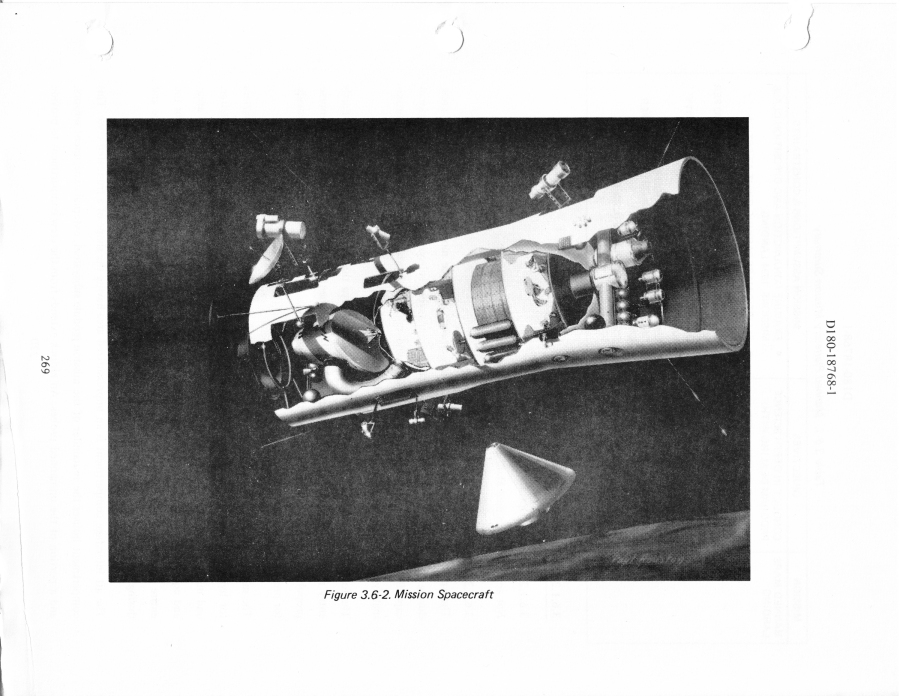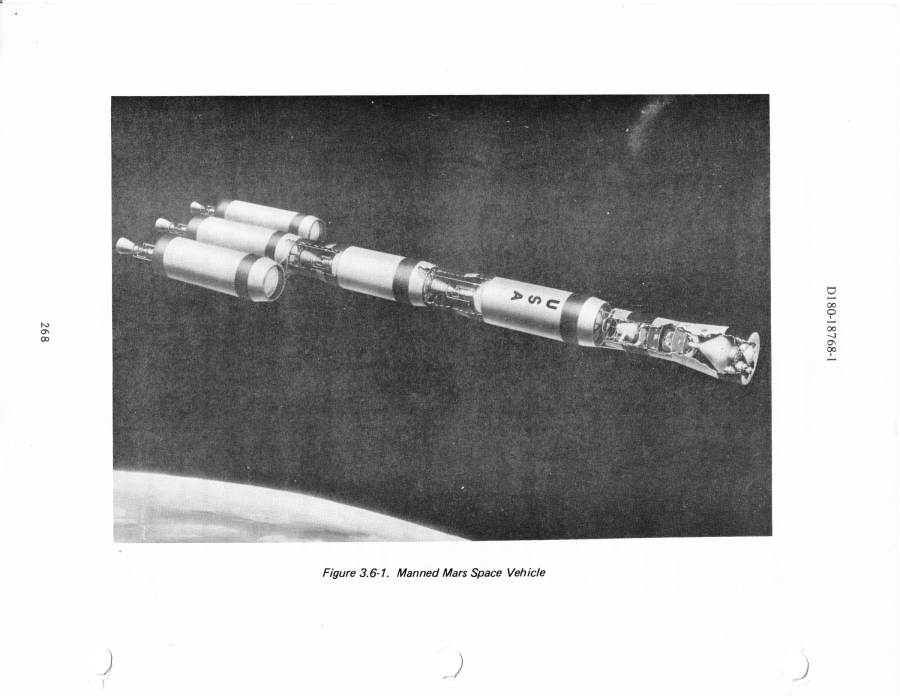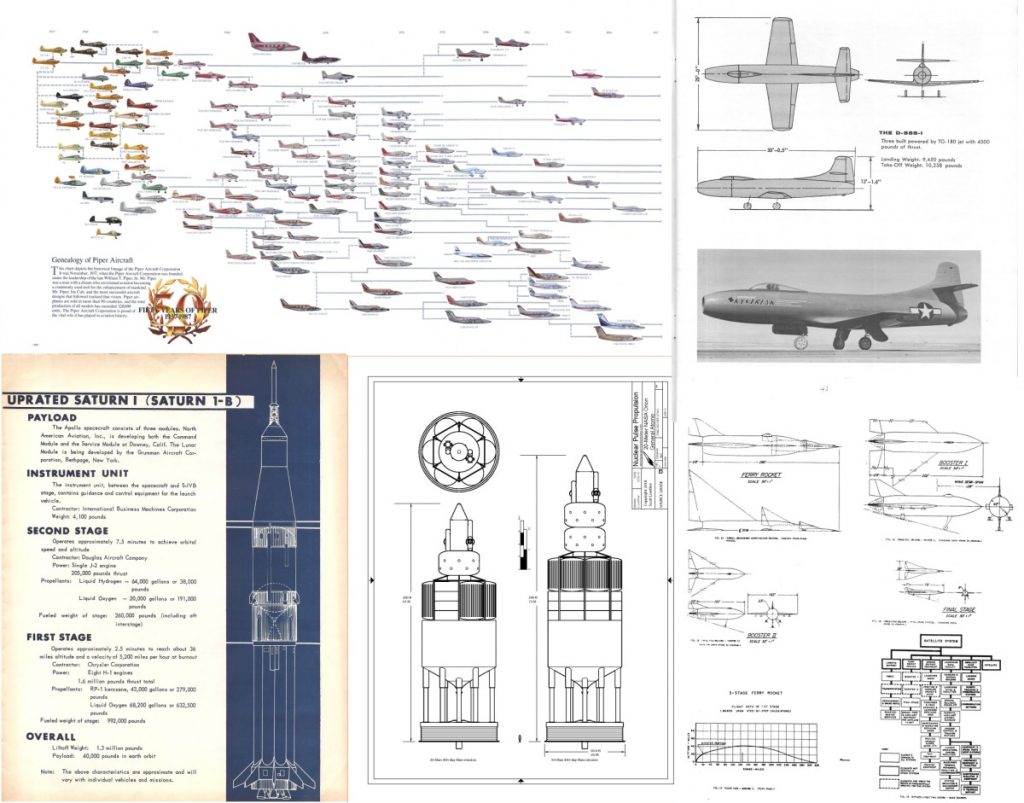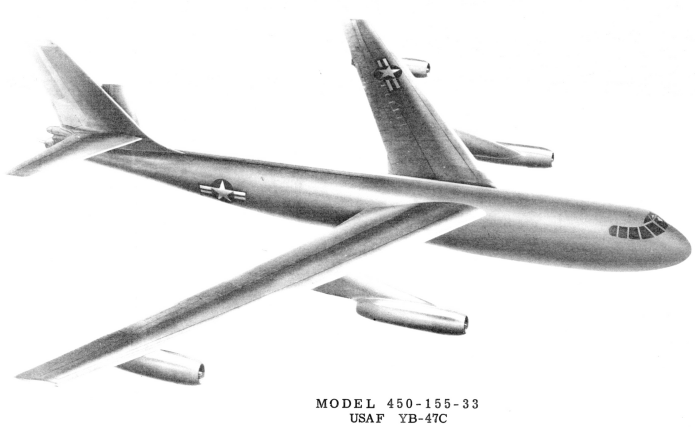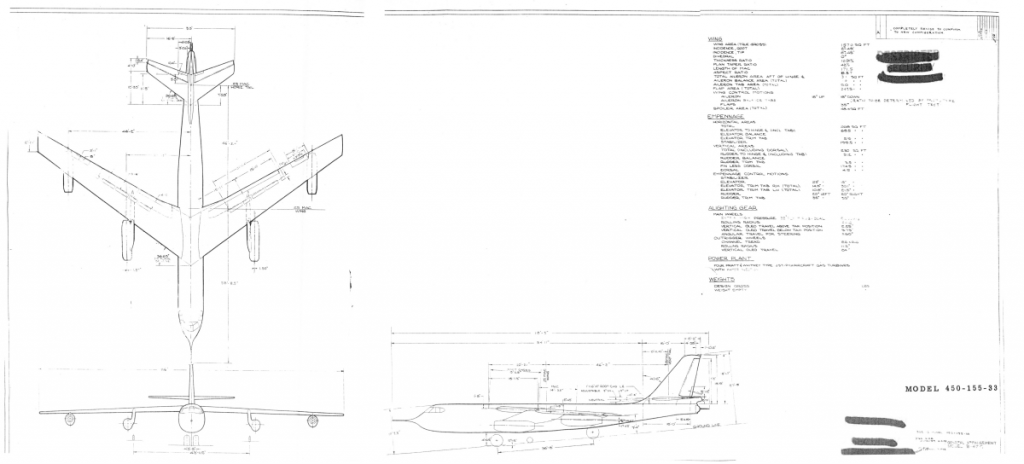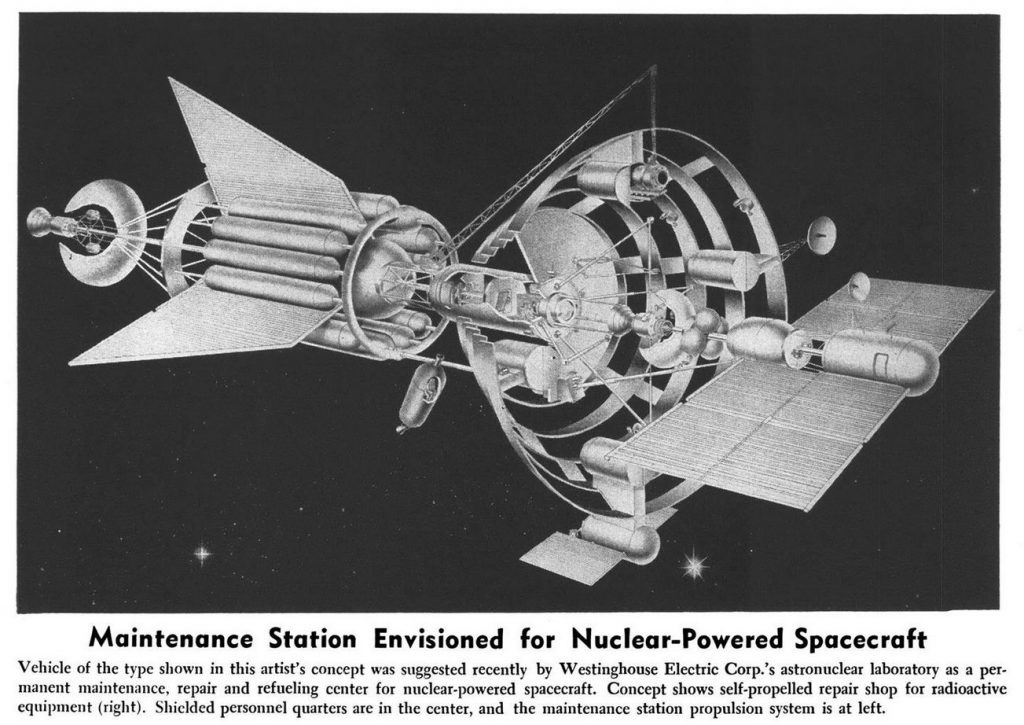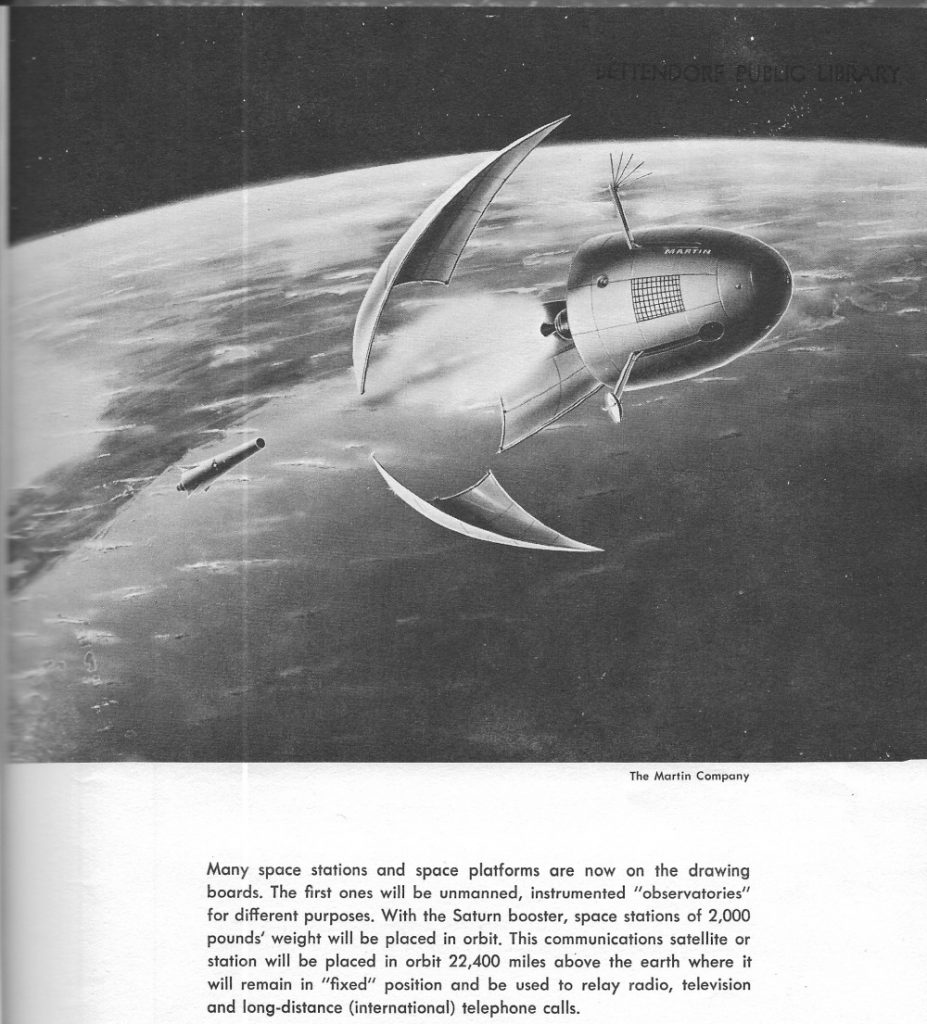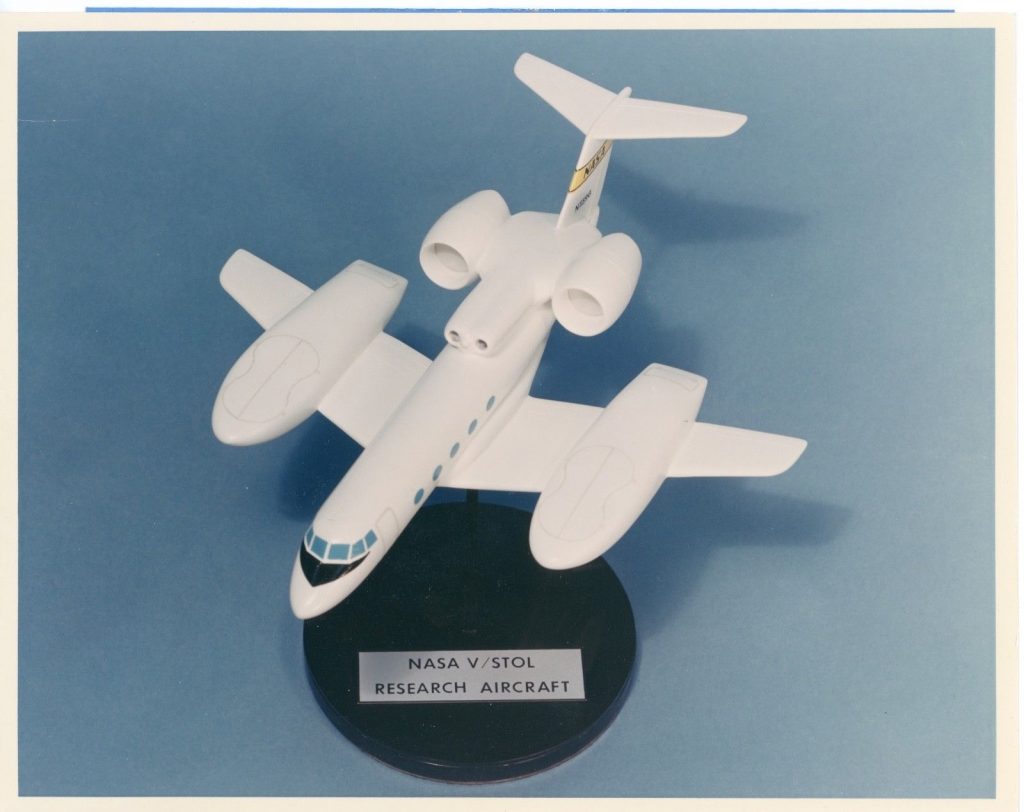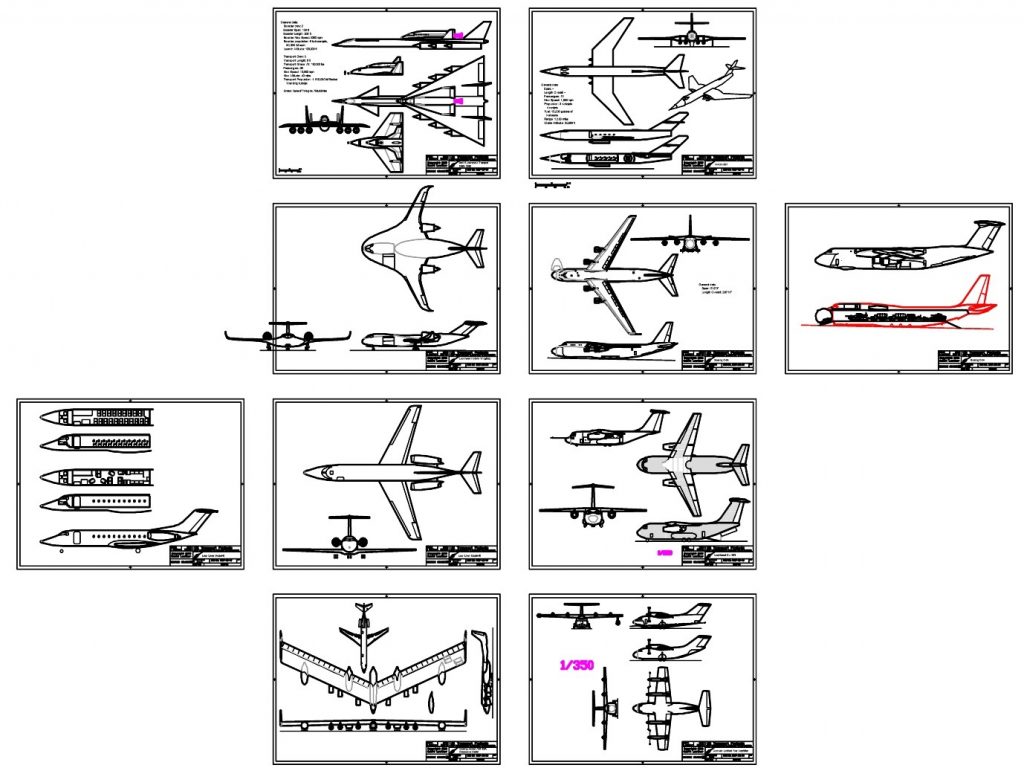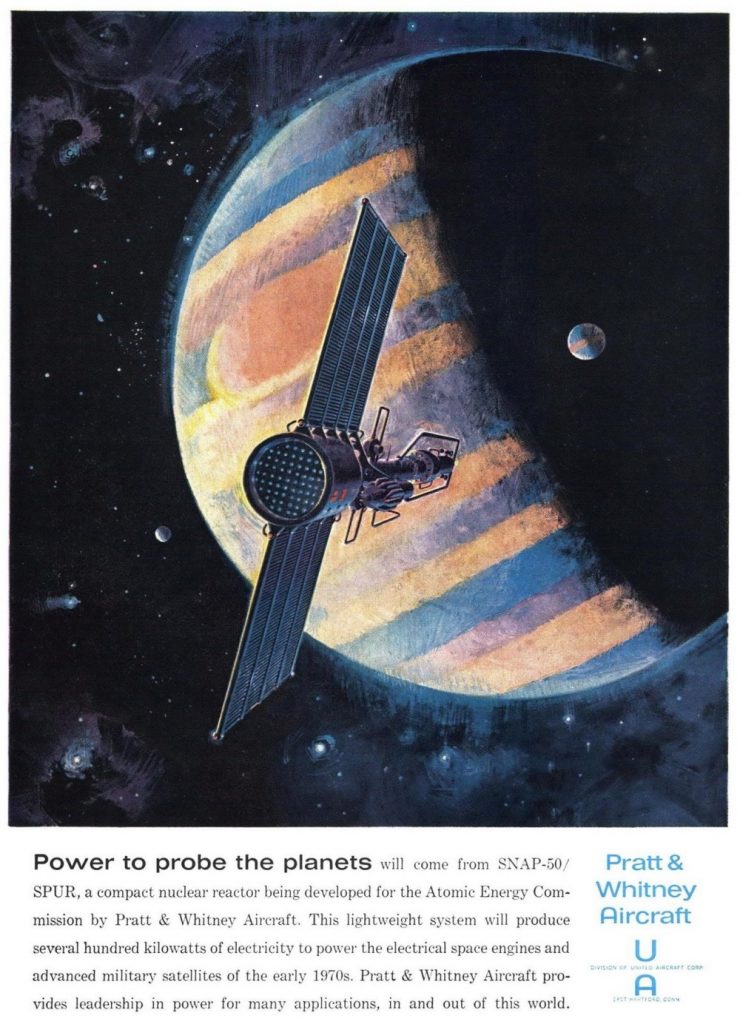This is what a manned mission to Mars dating from the late Apollo era would have looked like: a cluster of hydrogen tanks with a small number of NERVA nuclear rockets. The spacecraft would have been relatively gigantic as it leaves Earth orbit; large enough that it would have been assembled in space from at least six Saturn V launches. When it returns to Earth it would have been little more than the mission module; this would blast past Earth and continue in solar orbit while the astronauts and a few trifling hundreds of pounds of Martian souvenirs would have plowed into Earths atmosphere in a compact entry capsule. The mission module itself is described fully and heavily illustrated in US Spacecraft Projects #3.
I’ve uploaded the full rez versions of these renderings to the 2018-11 APR Extras folder on Dropbox, available to all APR Patrons at the $4 level and above. If this sort of thing is of interest, please consider signing up for the APR Patreon.
